Marketing Metrics Compared: Find Your Winning Formula

With so many marketing metrics available, how do you know which ones deserve your attention? We break down the most impactful measurements to help you optimize your campaigns with confidence.
Key takeaways
- Focus on end goals: Only keep marketing strategies that directly drive your bottom-line goals like sales and revenue; avoid vanity metrics like clicks or impressions that don’t translate to results.
- Use micro and macro conversions: Track small actions (micro conversions) to diagnose funnel issues and progress, but rely on big actions (macro conversions) to measure true success.
- Match metrics to traffic temperature: Differentiate strategies and metrics based on traffic types—cold (White Walker), lukewarm (Daenerys), and hot traffic—with tailored goals for each stage.
- Optimize ROI on campaigns: Continuously measure key metrics like cost per customer, conversion rates, and engagement to ensure marketing spend leads to profitable results and adjust accordingly.
On this page:
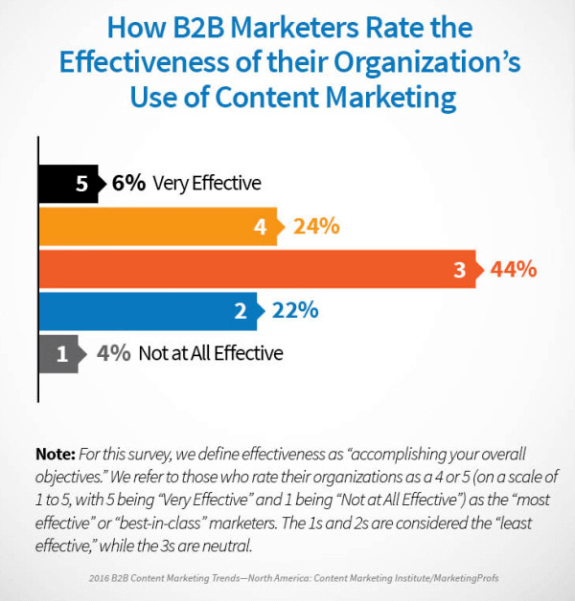
If you’re like me, this statistic makes you think one thing and one thing only:
A lot of marketers are confused.
A three, being right in the middle, tells us almost nothing about what marketers actually think of their strategies. It only tells us that (1) many marketers don’t think their strategy is total trash, (2) many marketers don’t think their strategy is exceptional, and (3) many marketers are confused about how effective their current tactics actually are.
And the same can be said for B2C marketers.
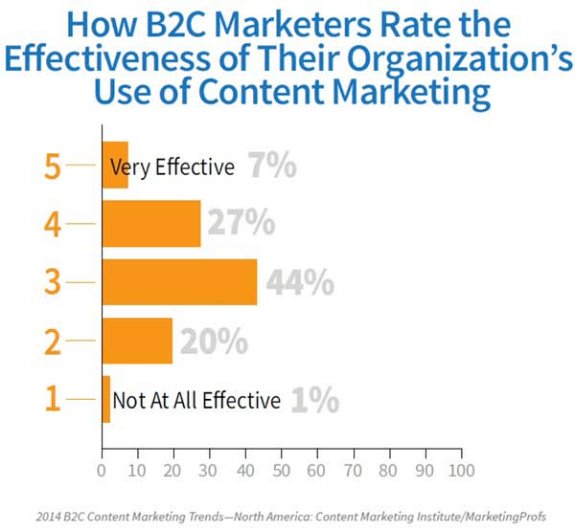
Part of that confusion can be tied to the fact that marketers are unsure of which metrics to measure for different marketing campaigns.
After all, social media requires that marketers pay attention to engagement for the sake of retargeting. PPC lives and breathes on the click. And an SEO strategy revolves around domain authority and rankings.
But all of these are ‘leading indicators.’ Yes, they contribute toward driving revenue. However, you can’t tie any of them directly back to new cash on the bottom line.
So here’s why the metrics you measure should ultimately revolve around the goals you’ve set.
Why you should start at the end
Every marketing campaign is different. That means the metrics you measure should be as well. Brand awareness, lead generation, engagement, and sales are typically toward the top of each marketer’s list.
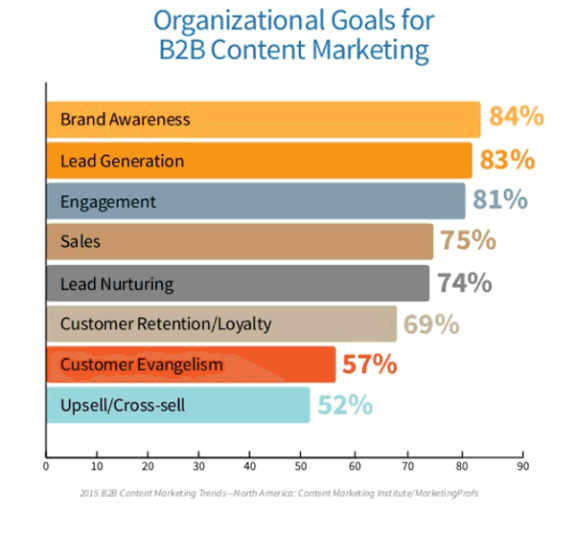
I’m willing to bet that these top priorities are similar to your own marketing goals. After all, the whole purpose behind your marketing campaigns is to increase sales and revenue for the business you’re helping.
And that brings us to the golden rule of marketing metrics.
If a strategy isn’t accomplishing your end goal, stop. Period.
Many marketers fall victim to believing in vanity metrics that don’t actually help their bottom line or move toward their bottom-line goals. Things like traffic generation, click-through rate, and the number of impressions.
These metrics don’t directly increase your business’s revenue. So you don’t want to use them to determine how effective your marketing strategy is (or isn’t).
However, these ‘vanity metrics’ can also make great indicators of where people are entering and leaving your funnel. They’re helpful to spot micro-conversions as they unfold.
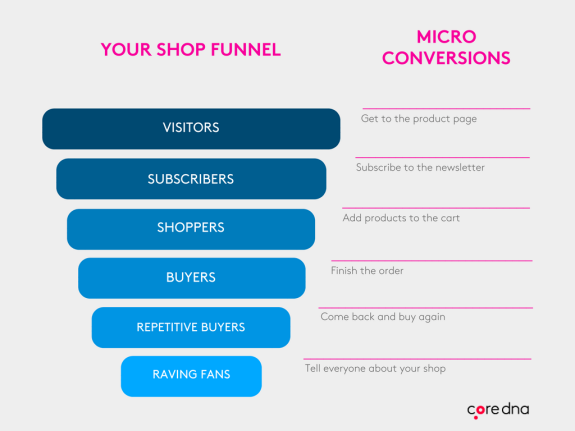
These are the little steps that people take toward actually accomplishing your marketing end goal. A conversion doesn’t happen overnight. Instead, it’s the culmination of a lot of little commitments that add up over time.
And while they aren’t useful as a final determiner of the effectiveness of your marketing strategy, they are effective as guiding lights to tell you if you’re moving in the right direction.
Here’s how ‘macro’ conversions and ‘micro’ conversions differ:
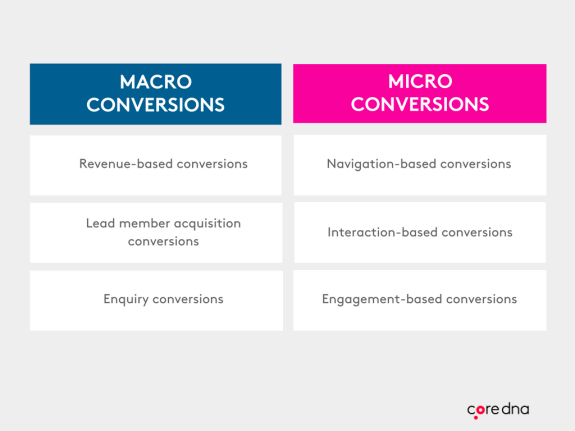
Both of these metric types are useful. But they serve far different purposes.
- Macro conversions tell you if your strategy is increasing the business’s bottom line.
- Micro conversions help you reveal problems, diagnose them, and tell you whether or not you’re heading in the right direction to accomplish your bigger goals.
Once you’ve determined what your end marketing goal is, you’re ready to dive into the specific marketing metrics that matter for each different strategy — from White Walker cold traffic to Dragon’s breath hot.
1. White Walker cold traffic
First, we’re going to discuss strategies and metrics that revolve around generating traffic to your website that’s cold as ice.
Blog post driven ads
Creating ads for blog posts on your website is a great way to generate leads from the traffic you already have flowing in on a daily basis.
Your goal with blog posts isn’t so much to make sales. That’s a huge leap for someone reading a simple post to get a little information about a topic. Most likely, they’re not ready to buy just yet.
Instead, focus on top-of-the-funnel metrics like traffic generation and page engagement. Advertisements like this provide an excellent strategy for driving ice cold traffic to your website.

When running blog post ads, here are the metrics you should track.
- Click-through rate: This will tell you directly how much traffic the ad is driving to your website.
- Engagement rate: This tells you how many people spent a noteworthy amount of time viewing and engaging with your advertisement. Meaning that those people are now familiar with your business.
- Type of engagement (positive or negative): Differentiating between positive and negative engagement is critical. Look at comments, types of reactions, and what people say when they share it. This will tell you not only how many people are engaging with your ad, but what they think of it.
Side note: If you’re looking to grow your social media advertising skills, we’ve curated 50+ resources to help you nail your next social media ads.
Low-commitment keywords
Every keyword phrase is different.
Some keyword phrases indicate that the searcher is looking for advice. Others, how to do something. And others still, how to purchase.
In this section, we’re going to focus on low-commitment (or ice cold) keyword phrases. These searchers aren’t interested in buying yet, but they are exploring things within your niche to become more familiar with the topics, problems, and pain points.
These are often “how to” phrases, such as “how to generate leads online.”
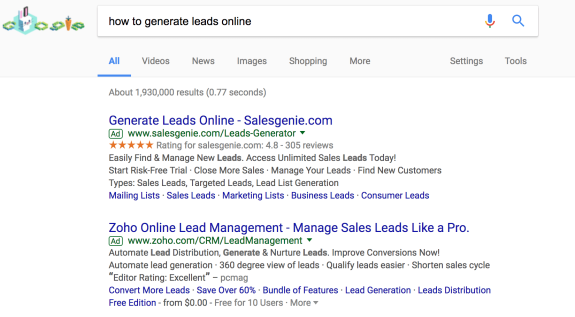
They might be open to the prospect of working with you. But right now, they are just looking at their options.
When you’re targeting these keywords, here are the metrics you should pay attention to.
- Click-through rate: The more people that click on your result, the more traffic and brand awareness you’ll generate.
- Page scroll depth: This metrics will tell you how far people are scrolling through the page they click on. Do they scroll through the whole thing? Or only the first half? Then, ask yourself why that is the case.
- Time on page: The more time that people spend on your page, the better that page’s ranking. Plus, it tells you how engaged people are with your content or sales copy.
- Bounce rate: If people bounce off your page, it not only hurts your rankings. It also means that people aren’t interested in what you’re talking about. In other words, the keywords you’re targeting and the topic of your page aren’t in line.
Direct mail
98% of consumers bring their mail inside the same day it's delivered, and 77% sort through it immediately.
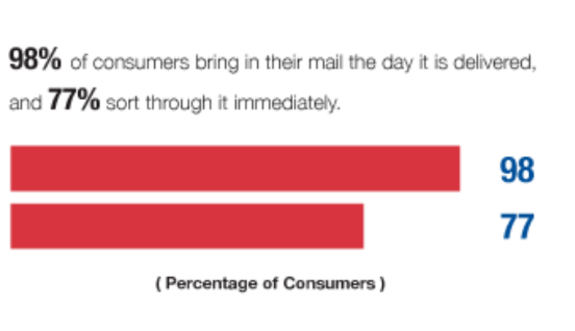
Even if people throw your direct mailer away, they saw your brand name, logo, and message. And that means they’re more likely to think of you later on if they ever require your services. Before the direct mailer, that wouldn’t have been the case.
Of course, you can use direct mailers to only target your customers or clients. But here, we’re discussing high-level direct mail campaigns. In other words, sending direct mail to a lot of people who may or may not be interested in what you have to offer.
When Uber Eats and Airtasker were launching in Australia, they’d send these flyers straight to people’s mailbox.
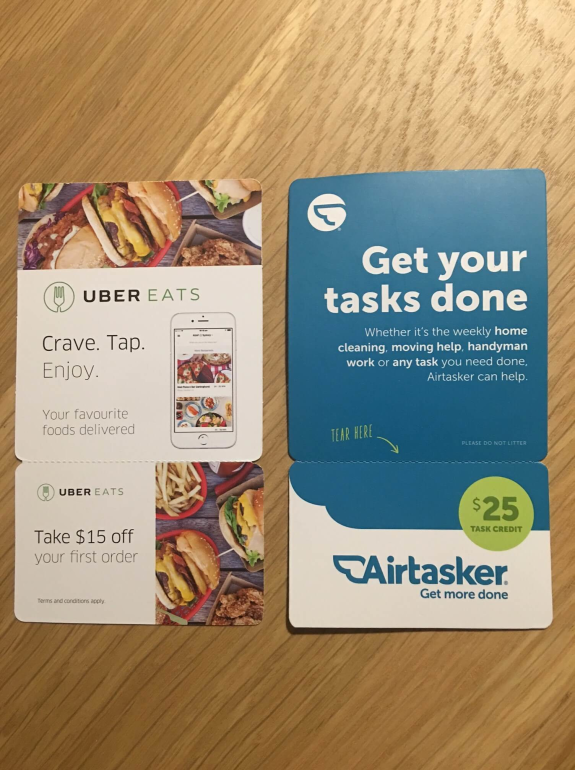
Here are the metrics that matter most when sending high-level direct mail campaigns.
- Response rate: You should always measure response rate regardless of whether your campaign is high or low-level. This tells you how many people are engaging with your mailer, which helps you determine whether you’re targeting the right people or not.
- Cost per acquired customer: How many people become customers due to your direct mailer, and what does it cost on average to acquire one customer? This is critical for determining the overall ROI of your campaign.
- Average revenue per conversion: How much does each conversion make you? Do different people buy different amounts of product? Again, this helps determine your overall ROI.
- Total ROI: What is the total ROI of your campaign? If you’re spending more than you’re making, it’s probably time to stop.
Display ads
Unfortunately, display ads are easy to miss.
In fact, on Facebook, in-feed ads are viewed 130% longer than display ads on the right. And most display ads end up in sidebars or at the top or bottom of a website.
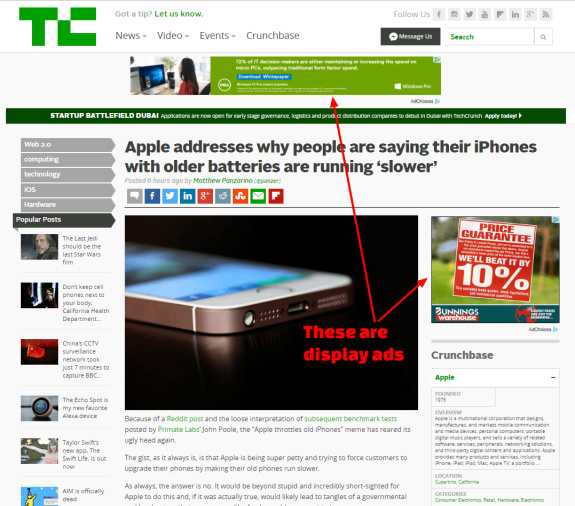
So what’s a marketer to do?
Sadly, most people are too used to ignoring display ads, which means that the only way to grab their attention is to use an image, color, or sales copy that immediately stands out.
Even though marketers like yourself can use these ads to retarget people who are interested in your product or service, this category still falls under ice-cold traffic. The main reason is that, with display ads, a lot of people will see your brand name, logo, and message, but won’t click.
And that’s okay, so long as you’re using the right metrics to measure your progress.
Here are those metrics.
- Cost per thousand impressions: Most display ads are priced based on thousands of impressions. While impressions are usually a vanity metrics, with display ads, it indicates how much you’re going to spend.
- Click-through rate: A high click-through rate means you’re driving more traffic to your website. If you’re getting lots of impressions but no clicks, you should stop your campaign and rethink it. Something is unappealing about the ad.
- Conversion rate: How many people convert? Let this serve as one of your end goal metrics for display ads.
- Cost per conversion: If you’re spending more than you’re making, consider investing your dollars elsewhere.
- Landing page interaction: Be careful of an ad that attracts clicks and bounces at an equal rate. If people are clicking, you also want them to engage, opt-in or convert.
2. Daenerys Targaryen lukewarm traffic
Now, we’ll turn our attention to the strategies and corresponding metrics that generate lukewarm traffic and leads. This falls right in the middle, between Dragon hot and White Walker cold.
Sort of like the Mother of Dragons, for instance.
Lead magnet content
You can create a piece of content that serves as a lead magnet to generate leads for your business. This is content that visitors only receive once they opt-in. Usually, the content is gated and has a CTA that looks something like this.
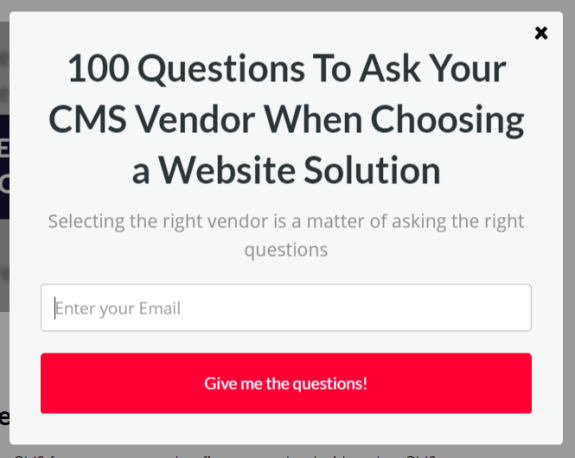
There are two categories of people you should target with lead magnets.
First, people who know about your business but have never committed. And second, people who don’t know who you are.
While you can generate leads from both categories, you’ll want to focus on the first to get the best ROI since they’ve already shown a marginal degree of interest in your product or service.
When you use this strategy, here are the noteworthy metrics.
- Opt-in rate: The end goal of this strategy is to gain leads. The more people who opt in, the more leads you generate.
- Cost per opt-in: How much does it cost you to generate each lead? If this ratio is too unbalanced, then rethink your ad, landing page, or lead-magnet resource.
- Follow-up email open rate: How many people interact with your email follow-up sequence? Many people will require several emails to finally opt-in, but you also need to ditch people who don’t interact with any of your emails.
- Acquired customer rate of people who opted in: You want to generate leads with the resource, but you also want those leads to turn into paying customers. What’s the rate at which that happens?
Medium-commitment keywords
Certain keyword phrases indicate that people are interested in the service you offer, but haven’t yet decided to work with your company. If you target these keyword phrases that have a medium level of commitment, you can steal leads from competitors and increase your business’s bottom line.
These phrases often look something like this:

These searchers might not know about your company yet, but they’re familiar with companies similar to yours.
Ultimately, they are looking for someone to work with, but they haven’t decided who. That’s the most important point in the buying process for you to show your face. You can target these phrases by using PPC or SEO. Either way, doing so is a great way to generate additional leads.
Here are the metrics worth measuring when targeting medium-commitment keyword phrases.
- Cost per click: With medium-commitment keywords, you might target them with PPC. In that case, determine your cost per click to fully understand what the ad is costing you and how much traffic it’s generating.
- Click-through rate: Whether PPC or SEO, click-through rate is critical for understanding how many people your result appeals to.
- Time on page: The longer that people spend on your page after they click, the better it is for your rankings.
- Cost per acquired customer: If you’re running PPC ads, how much does it cost you to acquire a customer? This same metric applies to SEO but is far more difficult to measure.
- Conversion rate: How many clicks convert? This is your end goal.
Social media marketing
Perhaps the best thing that social media has to offer marketers is the ability to target audiences with relentless focus.
Most people don’t immediately think of social media when they hear the word “retargeting.”
But on social media, you can target people who are interested in your product or service, retarget them, and even create audiences that are similar to your most successful audiences. Though human psychology is often confusing, social media makes it simple.
Here’s a Shopify ad that recently showed up on my Facebook news feed.
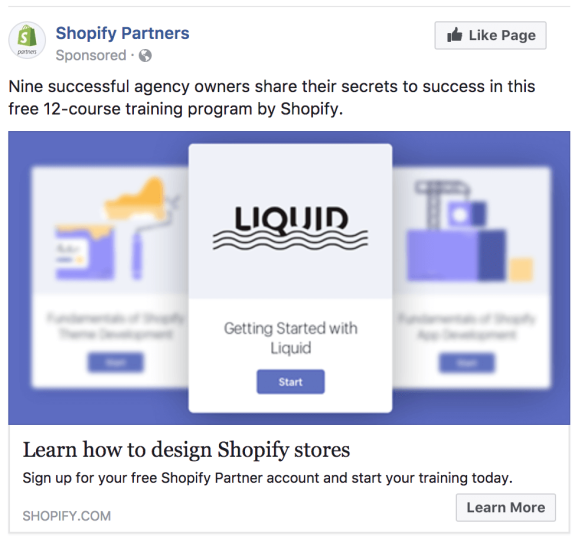
I was retargeted with this ad because I recently started a Shopify store and then closed it. This ad represents Shopify’s effort to reacquire me as a paying customer.
There are lots of ways to use social media advertisements, targeting cold traffic and warm traffic alike. That makes this strategy lukewarm.
Here are the metrics that matter most when you market on social media.
- Click-through rate: How many people click your post’s link tells you how appealing the post is.
- Conversion rate: Clicks are good. Conversions are better. How many people convert after they click?
- Cost per click: What does each click cost you? The lower, the better. This only applies to social media advertisements.
- Cost per conversion: How many people convert after clicking, and how much does each one cost you? Again, this only applies to paid ads.
3. Dragon’s breath hot traffic
Finally, we’ll take a look at the metrics and strategies that work to generate traffic as hot as Dragon’s fire.
Cart abandonment capture
The rate of cart abandonment is absurdly high, sitting at 69.23%. So plan for it. Use it as a chance to regain a fleeing customer.
And most likely, they left for one of these reasons.
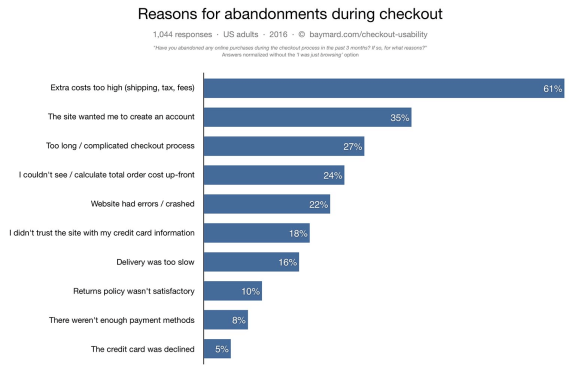
Costs that climbed too high, forced account creation, or a complicated checkout process are among the top reasons that people abandon their cart. So focus on those top reasons when trying to recapture cart abandoners. Offer a discount. Make the account creation process easy. Or simplify the checkout process.
I recently added items to my cart from Pura Vida Bracelets and then left. Immediately, they sent me this message on Facebook Messenger.
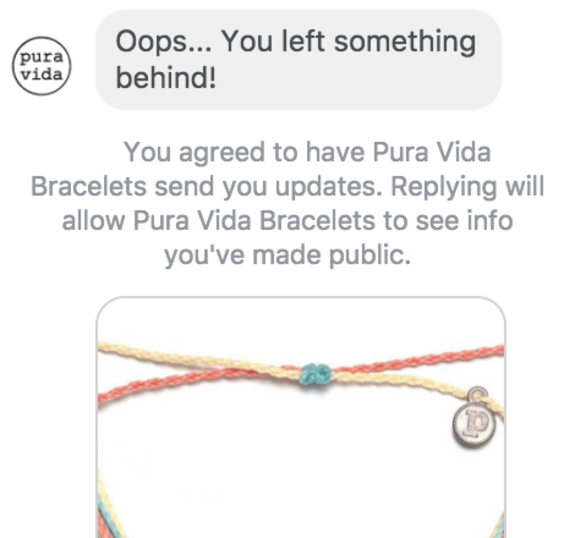
And they even added a discount.
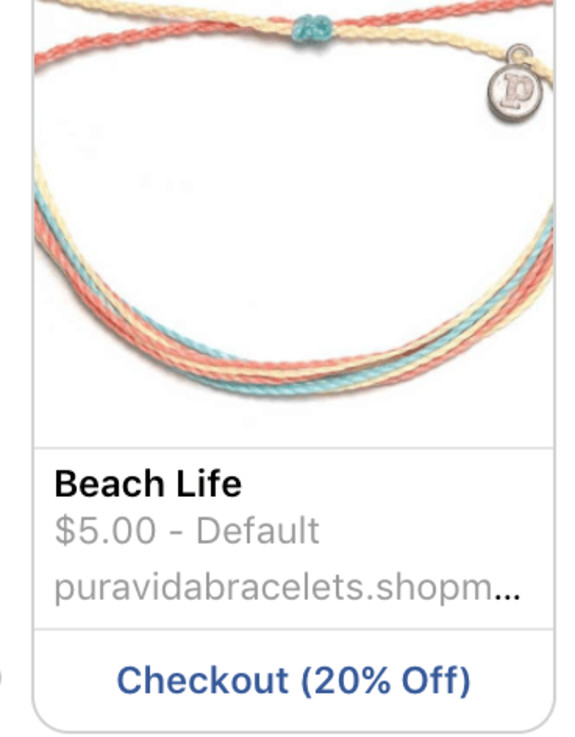
One thing’s for sure: People who abandoned their cart are more interested in your product or service than brand new visitors or non-brand aware visitors. If you try to recapture cart abandoners with some additional incentive, your conversion rate will surge.
Here are the metrics to track when you do so.
- Click-through rate: If people aren’t clicking on your cart abandonment message, try adding some incentive with a discount.
- Conversion rate: You want people to go from abandoning to converting. If people don’t convert, try a different medium (email, social media, or messaging apps). Or try including an extra incentive.
- Heatmap to determine what’s stopping non-converters: A heatmap will tell you a lot about why people abandon in the first place. Where do they stop? What do they look at right before they leave?
- Cost per click: Many ads are priced according to cost per click. The lower your cost, the more people you’ll be able to retarget with each dollar.
- Cost per conversion: If you use retargeting ads to attract cart abandoners, then measuring how much each conversion costs you will help determine whether the campaign is worth your time or not.
- Total ROI: What is the total ROI of your campaign? Make sure that it’s raking in more money than you’re spending.
High-commitment keywords
Finally, we come to the high-commitment keywords.
These are the phrases that people type into Google when they’re ready to buy, try, or opt-in. In other words, they're ready to convert. And they are probably some of the most important keyword phrases for your business to rank for.
They are phrases like “lead generating service.”
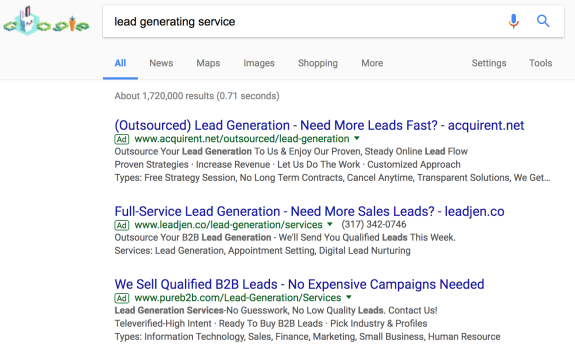
These prospects aren’t looking for education or a “how to” article. They’re looking to buy. End of story.
And they are every marketer’s dream.
Here are the metrics worth listening to when targeting high-commitment keywords.
- Click-through rate: A lot of times, you’ll want to use paid ads for high-commitment keywords. That way, you’re always at the top of the results when ideal customers come searching. With PPC, measure click-through rate to determine how many people prefer your ad over the competition.
- Conversion rate: How many of the people who click on your ad actually convert? The end goal is conversion, so make sure that you don’t let clicks distract you from this critical metric.
- Cost per conversion: How much does each conversion cost you? You always want to make more money than you’re spending.
- Bounce rate: Clicks are only useful if people spend some time on your page as well. If people leave right after they click, something is askew with your landing page (design, copy, load time, etc.) and you’ll want to fix it.
- Total ROI: How much does each conversion cost you? You always want to make more money than you’re spending.
Email marketing
In many ways, your email list is the warmest audience of all. In fact, 80% of retail professionals claim that email marketing is their best resource for customer retention.
Why is that the case?
Because you have direct access to people who have either already bought from you or have already opted in. And I don’t need to tell you that existing customers are far more valuable than new customers.
When targeting customers as good as old friends with your email marketing, here are the metrics that matter most.
- Click-through rate: If people aren’t opening your email and then clicking on your CTA, your emails aren’t effective. Period.
- Email bounce rate: Don’t let emails bounce too often. If an email address keeps bouncing, then remove it from your list to avoid harming your own email’s credibility.
- Conversion rate: Ultimately, you want people to convert from your email. But how many people actually are?













